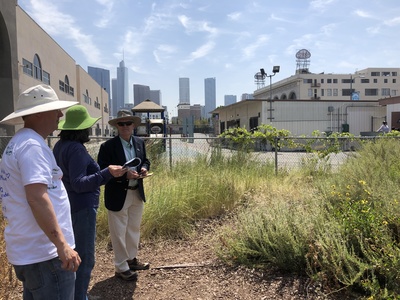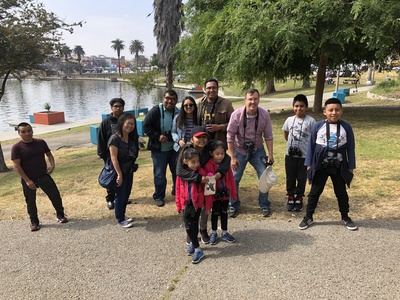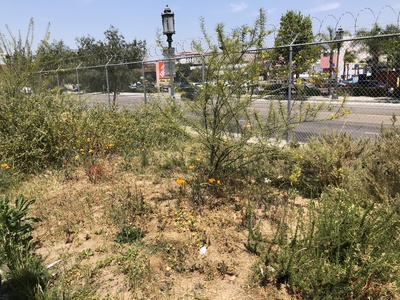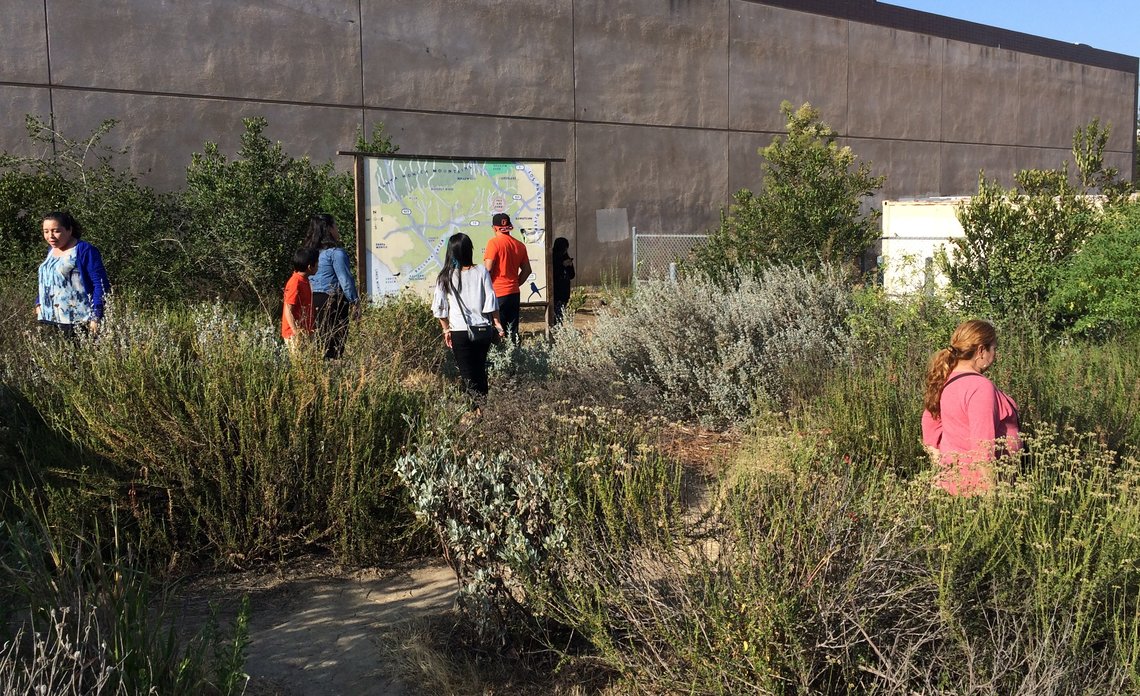By Angelina Horn, SoCal Regional Refuge Partnership Specialist, National Wildlife Refuge Association
In southern California, the predictable and pleasant weather in the region’s micro-climates means people can get outside for most of the year. It’s not unusual to see beaches and trails full of people in the middle of February, and Griffith Park swarming with tourists and locals alike. But in many areas of Los Angeles, and the increasingly urbanized counties from Ventura to San Diego, other barriers exist that prevent many people in under-resourced communities from getting outside and engaging with nature.

According to The Trust for Public Land’s annual ParkScore, which measures access and quality of parks and other public lands, Los Angeles ranks #55 out of 100 major metro areas in the United States for green space, despite being the second largest city in the country by population. Nearly a million Angelenos have little or no access to parks, gardens, or even a backyard, which disproportionately affects low-income residents.
The SoCal Urban Wildlife Refuge Project is an innovative response to a complex problem. Addressing this nature deficit requires more than inviting people to visit public lands and participate in programs; identifying and removing barriers to engagement means raising awareness as well as engaging a diverse array of partners to develop and implement programs that meet people where they are.
A few miles from downtown Los Angeles, habitats have been established at two Title I schools that were previously all concrete and asphalt. Students had no access to grass or shade, let alone a space that would encourage native plants, animals, insects, and birds to return to what used to be a verdant floodplain. Thanks to the efforts of the U.S. Fish and Wildlife Service, National Wildlife Federation, and the Los Angeles Audubon Society, these spaces have restored small pieces of native habitat that haven’t existed in the area for decades, and students have an outdoor classroom and a little piece of the wild on the grounds of their schools.

It doesn’t take long for birds and bees to find their way to these new environments. Less than two months after establishing a habitat, students at Leo Politi Elementary School began to see dozens of bird species flitting around the new plants in the 5,000-square foot space. As students began engaging with the habitat under the direction of their teachers and LA Audubon staff, test scores and proficiency in science rose along with a new interest in birds, bugs, and flowers.
“Natural green spaces at school aids student learning, and it is critical to provide such spaces for urban Los Angeles students,” said Stacey Vigallon, Environmental Education Director at LAAS. “Los Angeles Audubon’s Schoolyard Habitat initiative provides meaningful opportunities for students and teachers to use their schoolyard as a living outdoor classroom, to take on leadership roles, and to engage in conservation activities at school, home, and in their communities.”

Less than two miles away, Esperanza Elementary School has an even smaller footprint, but it packs an impressive array of native plants, and even registers as a hotspot for birding. Nearly 70 species have been seen in the area, including a burrowing owl that made the habitat home for two seasons, much to the delight of students and teachers. The enthusiasm for birds is palpable during a single visit to the habitat, as students excitedly point out hummingbirds, finches, sparrows, and hawks, often running to find a piece of paper or journal to record their sightings.
“Seeing first-hand the schoolyard habitat at Esperanza Elementary, what impressed me was seeing this small oasis of nature in a sea of pavement and concrete. The paths throughout the habitat were well worn from the children visiting to see the flowers, plants, and associated wildlife,” said Mark Musaus, COO of the National Wildlife Refuge Association.
As the habitats mature and expand (Esperanza recently increased its size), so will the programs and their impact. Not every student will become a biologist or botanist, but by providing a space for students to explore, wander, contemplate, and observe, the seeds are planted for a lifelong appreciation of conservation and engagement with nature and wildlife.

